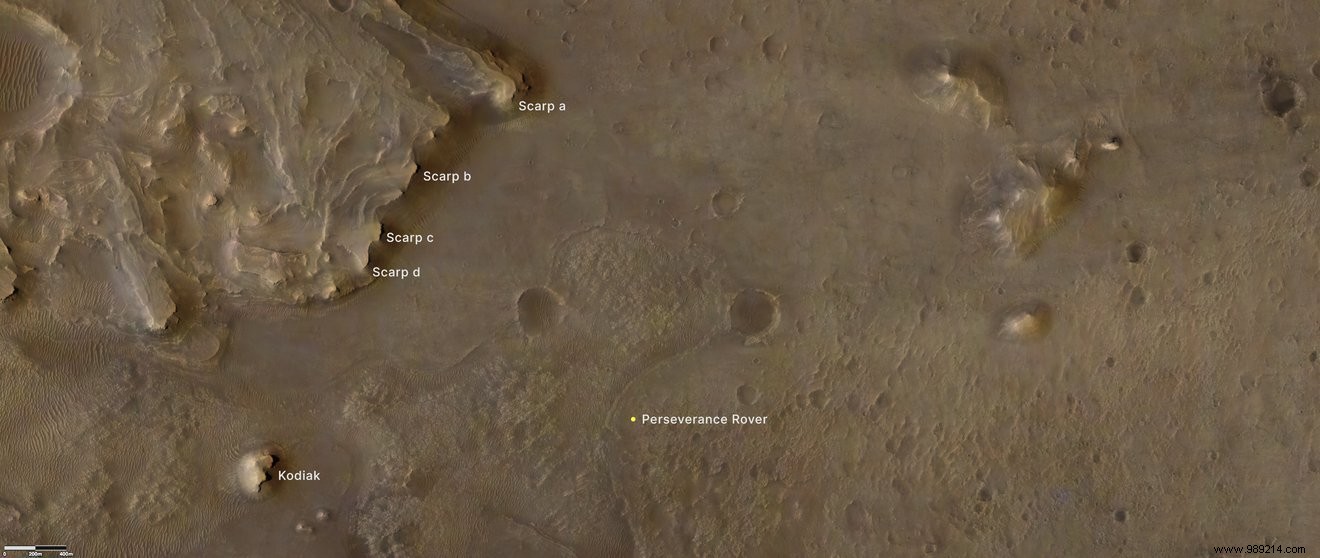Several years ago, NASA set its sights on Jezero Crater as a playground for its Perseverance rover, whose goal is to probe the presence of past life on Mars. The site had been chosen based on satellite images suggesting that the area once housed an ancient lake. Researchers now have more direct evidence of this aquatic past. This work is published in the journal Science.
Mars is cold and arid today. Nevertheless, orbital observations of several features (valley networks or sedimentary cones) suggest that the planet formerly had a warmer and more humid climate . However, there are still uncertainties about the character, timing, and persistence of this watery activity (and therefore the potential habitability of the planet).
The Mars 2020 mission, headlined by the Perseverance rover, is the first step in a campaign to bring Martian samples back to Earth to examine for biosignatures potential.
With this in mind, the Jezero crater (45 km in diameter) was selected as the landing site based on orbital images that showed geomorphological expressions of two structures in sedimentary fan (west and north) on the edges of the crater. The researchers then assumed that these were river delta deposits formed in an ancient lake basin between 3.6 and 3.8 million years ago . Spectroscopic observations from orbit have also detected phyllosilicates and carbonates, minerals indicative of past aqueous environments.
Until now, however, all these suspicions were fueled by aerial photographs. In a new study, researchers relied on Perseverance to analyze its geological environment. The rover took several photos, including a series of steep cliffs located about 2.2 km to the northwest, and a small knoll nicknamed Kodiak found to the southwest. Thanks to its Mastcam-Z and Remote Micro-Imager (RMI) instruments, the vehicle was then able to image the layers of rock and sediment contained in these formations.

Based on all this data, NASA was able to confirm once and for all that the Jezero crater formerly housed an ancient lake . Overall, it would appear that this lake was quiet for much of its existence around 3.7 billion years ago until a drastic change in climate triggers episodic floods towards the end of the history of the lake.
Indeed, on closer examination of the images of the main outcrop, they noticed large boulders and pebbles embedded in the younger and upper layers of the delta. Some rocks were up to a meter wide and weighed several tons . These massive rocks must have come from outside the crater and were probably part of the bedrock located on the rim of the crater several tens of kilometers away. Judging by their location and dimensions, the team claims that these boulders were carried downstream in the lake bed by a flash flood .
Now that they have confirmed that the crater was once a lacustrine environment, they now believe more than ever that its sediments may contain traces of ancient watery life.